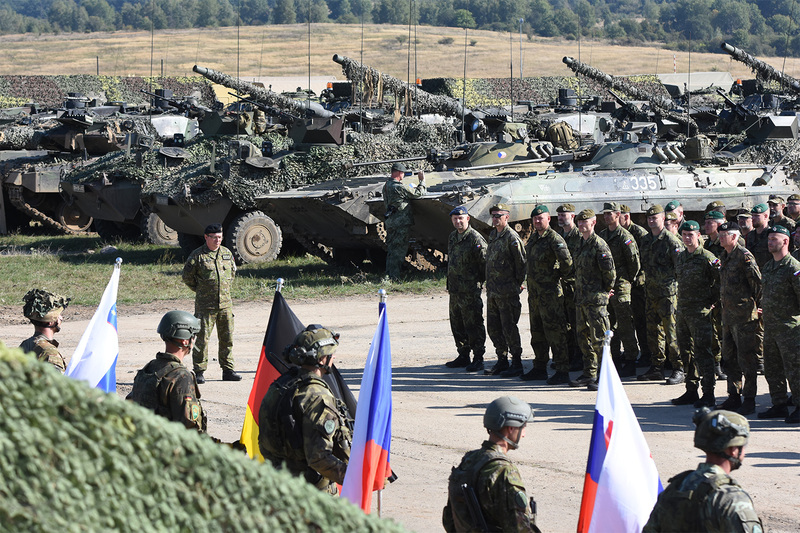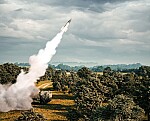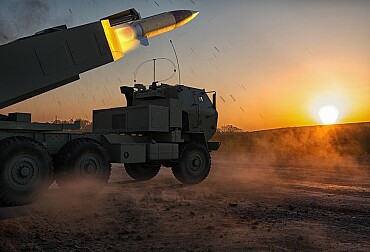NATO enlargement in the context of Russian aggression: genesis, current status and future prospects
NATO enlargement has become a key aspect of security policy in Europe, especially in response to Russia's increasing aggression. The accession of new members strengthens collective defence and stabilises democratic processes in the regions of the former Eastern bloc and the Balkans. This process brings not only military capabilities but also political and economic challenges and opportunities. The future of further enlargement will then be influenced by geopolitical factors, including relations with Russia and the political stability of candidate countries such as Georgia, Ukraine and the Western Balkan states.

NATO's expansion since its founding in 1949 has reflected dynamic changes in the global political and security environment. The original 12 founding members of the Alliance have gradually grown to the current 32, with each new addition responding to specific geopolitical and security challenges. A significant role in this expansion has been played by the former Eastern Bloc countries that joined NATO after the fall of the Iron Curtain and the collapse of the Soviet Union in 1991.
The genesis of the expansion of the Alliance after the fall of the Iron Curtain
After the fall of the Berlin Wall in 1989 and the subsequent collapse of the Soviet Union in 1991, the newly independent states of Central and Eastern Europe found themselves in need of securing their sovereignty, political stability and democratic reforms. Joining NATO became a priority for these countries, as membership of the Alliance offered security guarantees and support for democratic development.
The first wave of NATO enlargement was the admission of Poland, Hungary and the Czech Republic in 1999. These countries were of strategic importance and their admission was seen as a step towards stabilising the region and strengthening European security. This process involved intensive political and military reforms that were necessary to meet NATO criteria. The membership of these countries was also an important political signal towards Russia, showing the commitment of Western countries to support the process of democratic transformation in Central Europe.
The second wave of NATO enlargement in 2004 brought membership to Bulgaria, Estonia, Lithuania, Latvia, Romania, Slovakia and Slovenia. This was in response to the continuing security challenges in the region and the efforts to integrate other former communist countries into Western security structures. For these countries, NATO membership was not only a security issue, but also a confirmation of their still relatively newly acquired sovereignty and independence. The enlargement of the Alliance with seven new members represented NATO's largest expansion to date and contributed significantly to strengthening security on the Alliance's eastern borders.
In 2009, NATO expanded to include Albania and Croatia. These Balkan countries have undergone challenging defence and security reforms to meet NATO's entry criteria. With this step, Albania and Croatia have joined an international community that shares the values of democracy and the rule of law. Their membership has also strengthened stability and security in the Balkans, a region with a long history of ethnic conflict and political tensions.
Further enlargement took place at the end of the last decade when Montenegro (in 2017) and Northern Macedonia (in 2020) joined the Alliance. The process of their admission was long and involved a series of political and military reforms. The membership of these countries was crucial for strengthening the security architecture in the Balkans, and it was also a reaffirmation of NATO's continued commitment to an open admission policy for new member states that meet the Alliance's criteria.
The most recent and very significant enlargement of NATO occurred recently when Finland and Sweden joined the Alliance. The process of their admission has been intense and accelerated, especially in the wake of the Russian invasion of Ukraine. Finland joined NATO in 2023, while Sweden followed in 2024. This step represented a significant strengthening of the security architecture of Northern Europe and demonstrated NATO's commitment to protecting its members and responding to new security threats. The membership of Finland and Sweden has significantly increased the Alliance's ability to monitor and respond to activities in the Baltic Sea and Arctic region.
Enlargement of the Alliance in response to a Russian invasion in 2022
Finland - the 31st member of the Alliance
Finland's accession to NATO in April 2023 marks a significant milestone in the expansion of the Alliance. The move was a response to the growing security threats from Russia, particularly following the 2022 invasion of Ukraine. Finland formally applied for membership in May 2022, which was widely supported by both the public and the country's political spectrum. The move reflected concerns about potential threats to Finnish sovereignty and stability.
Prior to joining the Alliance, Finland had long maintained a policy of military neutrality, but geopolitical changes in the region have led to a reassessment of this strategy. Finland decided to seek the security guarantees provided by NATO membership and intensified its military and political reforms to meet the criteria for joining the Alliance.
Finland's integration into NATO has brought several key benefits for both sides. Finland has a modern and well-trained army with extensive defence experience, which has strengthened the collective defence of Northern Europe. The Finnish armed forces are known for their ability to operate in Arctic conditions, which is strategically important for the Alliance. This accession has also improved the Alliance's ability to respond to potential threats in the Baltic Sea area, which has strengthened the security situation not only for Finland but also for other Member States.
The process of Finland's accession to NATO involved not only military but also political and diplomatic aspects. The Alliance had to ensure that Finland was fully integrated into its structures and able to cooperate effectively with other members. This required harmonising military doctrines, increasing interoperability of forces and ensuring that Finland would be able to contribute to Alliance operations.
Finland's entry into NATO was also a strong political signal towards Russia. It has shown that Russia's aggressive policy has led to the opposite effect to that intended, i.e. the strengthening and expansion of the Alliance. The move thus not only increased the security of Finland and the Alliance, but also increased NATO's overall deterrent potential against potential aggressors.
Sweden - the 32nd member of the Alliance
Sweden, which applied for membership together with Finland in May 2022, was formally admitted to NATO in March 2024. The Nordic country's admission process ended up being more complicated and lengthy than originally expected, mainly due to Turkey's demands for assurances regarding the fight against groups Turkey considers terrorist organizations. Turkey emphasised the need for Sweden to take concrete measures against Kurdish groups and other organisations, which led to extensive diplomatic negotiations and delays.
Despite these complications, Sweden's admission to NATO was ultimately successful, and the important Nordic country became the 32nd member of the Alliance this year. For NATO, this meant a further strengthening of the Alliance's northern wing, which is crucial for Europe's defence against potential threats from Russia. Sweden's accession has brought not only considerable military capabilities, but also technological and logistical support that enhances NATO's ability to respond to threats in the region.
Sweden has a strong naval force and a modern air force, which have strengthened NATO's ability to control the Baltic Sea and the Arctic. The joint membership of Sweden and Finland represents a strategic strengthening of defence in Northern Europe and sends a strong signal to Russia of the Alliance's unity and commitment to protect its members. The move also demonstrates that the Alliance is capable of adapting to new security challenges and strengthening its defence capabilities through enlargement.
The process of Sweden's accession also demonstrated NATO's significant diplomatic flexibility and ability to negotiate with its members to reach consensus. Individual member states had to overcome their own political and security concerns, which led to important compromises and diplomatic concessions. The result is a stronger and more cohesive Alliance, better prepared to face current and future threats.
Strategic reasons for enlargement
Each wave of NATO enlargement has been motivated by the desire to increase stability and security in Europe. The accession of new members has brought not only new military capabilities, but also strengthened NATO's political influence and ability to respond to threats in different regions. The enlargement of the Alliance has often been accompanied by intensive dialogue and cooperation with Russia, despite its concerns and opposition to the Alliance's eastward expansion.
NATO strategic documents such as the Membership Action Plan (MAP) provide a clear framework for preparing candidate countries for membership. This process includes regular assessments of progress, technical assistance and advice on the implementation of necessary reforms. For example, "NATO Enlargement: Moving Forward; Expanding the Alliance and Completing Europe's Integration" details the steps and criteria that must be met for successful admission of new members.
NATO enlargement is therefore not just a question of military capabilities, but also involves political, economic and social aspects that contribute to the overall stability and security of the Euro-Atlantic area. Each new member brings new perspectives and experience to the Alliance, thereby strengthening NATO's collective defence and its ability to meet current and future challenges.
Benefits and challenges of NATO enlargement
One of the key aspects of NATO enlargement is how the integration of new members contributes to the overall security of the Alliance. The arguments for enlargement include several important points:
- Strengthening collective defence: Integrating new members into NATO strengthens the collective defence of the whole Alliance. New members bring not only new military capabilities but also geographical advantages that can improve the strategic deployment of NATO forces. For example, the eastward expansion of the Alliance has enabled better defence of the eastern borders and increased the ability to respond quickly to potential threats. This is particularly important in the context of Russian aggression, where it is essential to have strong and well-deployed defence capabilities capable of countering potential attacks.
- Stabilising democratic processes: NATO membership requires that candidate countries meet high standards of democratic governance, the rule of law and the protection of human rights. This process helps stabilise democratic institutions in the new Member States and promotes political and economic stability. In this way, NATO not only enhances its own security but also contributes to the spread of democratic values and principles.
- Deterring potential aggressors: the admission of new members to NATO acts as a strong deterrent against potential aggressors, in particular Russia. NATO's presence in Central and Eastern Europe sends a clear signal that any attack on a member country would trigger a collective defence response by the whole Alliance, as stipulated in Article 5 of the North Atlantic Treaty. In this way, NATO enlargement increases security not only for the new members but also for the Alliance as a whole.
Critical perspectives on NATO enlargement
On the other hand, critics of NATO enlargement warn of several potential risks:
- Deterioration of relations with Russia: one of the main arguments against NATO enlargement is the fear that it may lead to a deterioration of relations with Russia and provoke confrontation. Russia sees NATO's eastward expansion as a threat to its national security and sphere of influence. This has led to tensions and conflict situations, as seen, for example, in Russia's annexation of Crimea in 2014 and its support for separatist movements in eastern Ukraine. Critics fear that further NATO expansion could trigger a further escalation of tensions between the West and Russia.
- Costs and logistical challenges: NATO's expansion also brings significant costs and logistical challenges. Integrating new members requires significant financial investment in military modernization, infrastructure and training. The Alliance also needs to ensure that new members are able to work effectively with existing NATO military structures, which may require comprehensive harmonisation of military doctrines and procedures.
Political and social challenges
New NATO members may bring not only military capabilities but also significant political and social challenges. Candidate countries often face complex internal and inter-state issues that can affect the stability and security of the entire Alliance. For example, internal political instability, corruption, ethnic tensions and unresolved conflicts can threaten NATO's effectiveness and cohesion.
Some candidate countries have long-standing historical disputes with their neighbours that could escalate and burden the Alliance. One example is Bosnia and Herzegovina, which is still dealing with the aftermath of the ethnic conflicts of the 1990s and political instability among its main ethnic groups. Similarly, Kosovo, whose independence is not recognised by all NATO member states, faces challenges in terms of international recognition and relations with Serbia.
NATO must carefully consider whether these new member states are ready and able to contribute to overall security and stability. This process includes assessing their ability to implement the necessary political and economic reforms, maintain stable democratic institutions and ensure the protection of human rights. The Alliance must also ensure that new Member States are able to cooperate effectively with other members and contribute to collective defence operations.
The admission of new members may also trigger internal debates and political friction within NATO, as some member states may have different views on the appropriateness and timing of enlargement. These dynamics require careful diplomacy and negotiation to ensure the unity and cohesion of the Alliance.
Reflection
NATO's expansion in the context of Russian aggression illustrates how the international security architecture responds to changing threats and challenges. The Alliance faces dilemmas related to the need to balance between expansion and maintaining a functional and effective structure. Each new member brings not only new commitments but also the potential to strengthen collective security.
NATO enlargement is not a mere administrative act, but a complex process involving strategic, political and military aspects. Each enlargement brings new geographical positions, military capabilities and political dynamics to the Alliance. In the context of Russian aggression, NATO enlargement has become even more urgent as the addition of new members, especially from Eastern Europe, strengthens the line of defence against potential threats from the East.
Current NATO policy shows that the Alliance is ready to meet new security challenges with adaptive and proactive measures. For example, the accession of states such as Poland and the Baltic countries has significantly strengthened NATO's ability to monitor and respond to activities from Russia and Belarus.
However, enlargement also brings challenges. NATO must ensure that new members are fully integrated into existing structures and able to work effectively with other members. This includes harmonizing military doctrines, increasing interoperability of military units, and ensuring that new members are able to contribute to NATO operations.
In addition, NATO enlargement requires diplomatic skills. NATO must continually navigate between the aspirations of new member states and the reactions of countries, such as Russia, that perceive Alliance expansion as an existential threat. This balance between enlargement and maintaining stable international relations is one of the key challenges NATO faces in the current security environment.
Predictions
NATO's future enlargement is likely to be influenced by several key factors. First and foremost, it will depend on the further development of relations with Russia and the internal political situation in the candidate countries. Georgia and Ukraine, which have ambitions to become members of the Alliance, will need to continue reforms and ensure that they meet all the requirements for accession.
In the case of Georgia and Ukraine, the situation is complicated by long-term conflicts and instability in some regions. Georgia faces challenges related to the occupation of South Ossetia and Abkhazia, while Ukraine is struggling with the ongoing conflict in the east of the country and the annexation of Crimea by Russia. These problems represent not only security but also political challenges that must be resolved in order for these countries to integrate fully into NATO.
A key factor that will have a significant impact on the future enlargement of NATO is the outcome and subsequent events of the Russian-Ukrainian war. As experts such as Timothy Snyder have pointed out, the war in Ukraine represents a major turning point in Europe's geopolitical dynamics. The outcome of this conflict will not only affect Ukraine's internal political stability, but will also show how effectively the West can support the democratic aspirations of the countries of Eastern Europe against Russia's expansionist policies. If Ukraine achieves a lasting peace and restores its territorial integrity, this will strengthen its position as a candidate for NATO membership, while demonstrating that the Alliance is capable of countering aggression and supporting its partners.
Another promising area for enlargement is the Western Balkans, where several countries have expressed interest in membership. Political stability and the resolution of historical conflicts will be key factors for the successful integration of these countries into NATO.
In this context, the Alliance will need to continue its policy of engagement and support for reforms in these countries. The provision of technical and financial assistance for the modernisation of military forces, the promotion of democratic institutions and the facilitation of dialogue between different political and ethnic groups will be key to the successful expansion of NATO in these regions.
Conclusion
NATO enlargement is an essential element of international security strategy, bringing significant benefits but also challenges and risks. The process must be carefully managed and planned to ensure that the benefits outweigh the potential negative impacts. NATO must continue its policy of engagement and support for reforms in candidate countries while responding effectively to changing geopolitical and security conditions. Future NATO enlargement will play a key role in shaping the security architecture in the Euro-Atlantic area and will have far-reaching implications for international stability and security.








